Dies
Each SAC grows a year older each year. On or just before/after the founding day, the Dies Natalis is celebrated, resulting in exciting parties to which all SACs are invited. Check the calendar on the right for all upcoming Diessen dates.
SAC birthday calander
26 januari: NSAC (1971)
7 februari: GSAC (1946)
12 februari: ZeeSAC (2012)
18 februari: ESAC (1976)
3 maart: LSAC (1924)
15 maart: NijSAC (1984)&RSAC(2020)
23 maart: ASAC (1926)
27 maart: WSAC Ibex (1986)
18 mei: MaasSAC (1984)
18 september: TilSAC (1984)
15 november: USAC (1928)
17 november: S.V.A.C. Yeti (1981)
3 december: TSAC (1979)
14 december: DSAC (1922)
Instructions to get the most out of the dies
During the months of February and March, a total of eight different SACs celebrate their Dies. Most SACs celebrate this with their Dies, and the best part is to celebrate as many as possible. But what exactly is a Dies, are there any clear differences between the Dies of certain SACs, and how can I best survive? Last year, I celebrated nine SAC Dies, and I’ll explain how to get the most out of a Dies.
For starters, Dies comes from the Latin “Dies Natalis,” which translates to “birthday” and refers to the anniversary of an organization. Each SAC celebrates its Dies in its own way, but generally, there are trends and customs that will recur at multiple Diessen celebrations. Essentially, a Dies is a party with lots of dancing, drinking, and networking. Especially if no one from your own SAC is coming with you, or if you don’t know anyone outside your own SAC yet, this is an opportunity to meet people in other cities who share your interests, namely mountaineering, and their traditions. Many diessen have a theme, and dressing up in the theme is an easy conversation starter, or if there’s no theme, wearing clothes with your SAC’s name printed in large letters.
Besides just a party, there are also several traditions. For example, during a Dies Natalis (Dies Natalis), SAC board members visit the board of the birthday SAC for a reception. The receiving board members give a short, playful speech to congratulate them, followed by a gift, usually a bottle of liquor that the SAC board must empty on the spot. Assistance from the receiving board, Dies Natalis committee, or the club’s drinks organization is available if it’s unwise for the local SAC board to handle it alone. If your venue doesn’t allow external drinks in the pub, or if no board members drink alcohol, discuss this with the pub beforehand so that an exception can be made for receptions. Indicate this in the invitation beforehand, or come up with a way to handle this. However, do offer the SAC board members the opportunity to take a moment to celebrate. There’s nothing more rude than not making time for someone who has come to your Dies Natalis specifically to congratulate you with a gift. For example, after it turned out on the spot that the pub didn’t want a reception, I went outside to a reception on the street after the dies with almost the entire SAC board. It wasn’t ideal, but better than nothing. Another tradition that you can also participate in as a non-board member is brassing the flag. Nothing exudes more pride for your association than a flag, and if you, as a board, lose it, you’ll do whatever it takes to get it back. The goal of brassing is to get the SAC flag outside. If you succeed, all the wrestling is over, and you can take the flag with you, on the condition that you send a brassing letter the next day with a fun task for the board to earn the flag back. For example, don’t hang it on curtain rails that can’t be broken, put it in your underwear, or make it impossible. SAC members go wild for the flag, and if the flag is unruly, they come up with other things to scavenge, such as drivers themselves, mascots, or received gifts.
byThomas van der Tooren
“Een DIES vierende SAC”
by Daphne Schoenmakers

